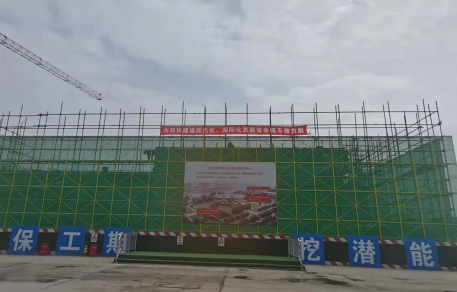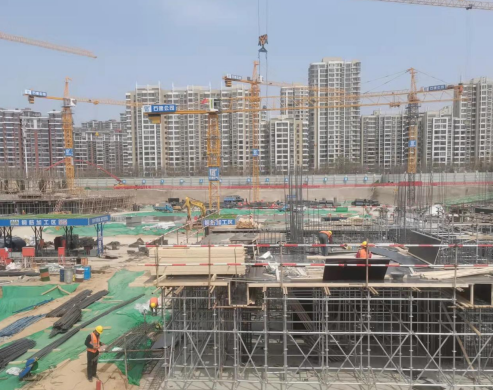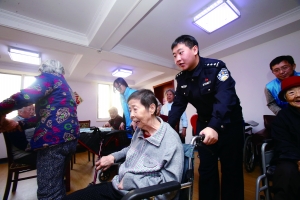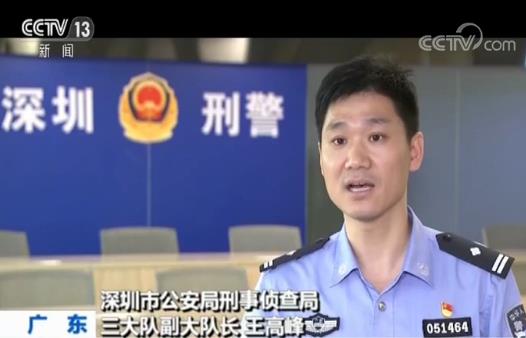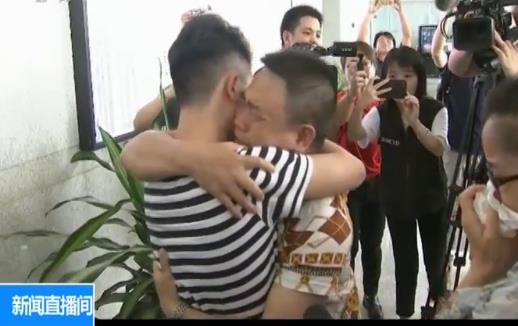I hate it when someone posts on the internet that the movie is not good without watching it carefully, and says a lot of hurtful things just to show how humorous and insightful they are. Three years, three years of films, how many times of painstaking efforts, you just think you understand the infinite after watching it once? I’m telling you, a good movie should be watched at least a hundred times!
Now let me tell you about the true meaning of this film:
At the beginning of the film, a wandering girl picked up a steamed bun from a dead soldier on the battlefield. Many small whites laughed and said why the soldier was holding a steamed bun in his hand while fighting. Look, ignorance is revealed. The deep meaning here is to show the psychological course of North Childe Wu Huan (Nicholas Tse) from purity to darkness. At first, what a kind man the Duke of North was, his soldier, who went to the battlefield with no weapons in his hand but only steamed bread! That’s to send food to ordinary people, but it’s not understood. Steamed bread is only a cold knife, because others don’t believe that someone will go to war with no weapons but steamed bread! (especially Xiao Bai on the Internet). The theme is profound, too profound. Combined with the reappearance of the steamed bread at the end of the film, the secret theme of the whole film is: "People will never trust each other." The performance is incisive, and the audience has joined the process of this performance art, because the audience also refuses to believe that Wuji is a good film, which is too tragic. What is a real tragedy? This is a tragedy. A real director can not only show the tragedy in the film, but also turn all the audience who have seen the film into a part of the tragedy! The director himself is the real Duke of North who is not believed by everyone: a tragic hero!
All right, put away your tears and go on with the explanation. The girl got the steamed bread from the dead man, and then the young Duke of North, who was alone, just walked on the battlefield in pain. What? Didn’t see his pain? Of course it’s painful, otherwise, what’s the reason for a noble child, wearing armor, walking alone on a battlefield full of dead people? Would a real director do such nonsense? Of course, there is a profound background. It is only possible that the young Duke of North failed to deliver food to the people and suffered a blow, so he wandered alone on the battlefield. Only after seeing the little girl holding a steamed bun in her hand will she rush over angrily and tell her that this steamed bun is his!
But please note that the face of the Duke of North is still smiling. Why is he smiling? Because he is actually happy in his heart, because a little girl is finally willing to eat his steamed bread, which shows that someone is finally willing to believe him, and the teenager sees hope in his heart, so he falls in love with this little girl who is willing to eat his steamed bread, because only she is willing to believe him.
But at this moment, the writer’s superiority appeared, and the tragedy came. The little girl cheated the pure and kind Duke of Xiaobei, and she knocked him out and ran away! Audience, you may feel the pain, confusion and struggle in Duke Xiaobei’s heart after waking up. A child has to bear such a big tragedy, and no one will believe that his soldiers will send steamed bread to others! Even the people he loved were all for a steamed bun, so his psychology began to change. He no longer trusted anyone. What a reasonable arrangement. By the end of the movie, watching the Duke of North once again lift the steamed bun to the girl Qingcheng with tears, who could not help crying? (except those little whites who saw their noses go to the movies! )
Okay, I was just talking about the childhood trauma history of Duke Xiaobei. In the blink of an eye, twenty years later, Hiroyuki Sanada, the flower general, took the bright red flower army and held the bright red flower Citigroup to suppress the black cow dung bandits. It is commendable that the colors used here are absolutely clear, and the picture of the red flower army rushing straight into the black cow dung army has profoundly pointed out the grand theme of this film: "Love is the process of inserting a flower into cow dung." Cows, that’s awesome. Pay attention to so many cows and flowers in the camera. What do they represent? You mindless idiots who watch movies!
Then the general saw the sturdy slave Zhang Dongjian in the battle and fell in love with him at first sight. This is the director’s profound meaning. Stupid people can’t understand it and only curse it. Please look at the wonderful details here: from the red arrow before the war through the beef, in fact, it is a metaphor that Qiu Yute’s arrow passed through the general’s heart at that time. This detail is wonderful, wonderful and vivid. I am so amazed and awesome. After the war, the general left the army to chase Zhang Dongjian alone, and then he was asked to belong to himself and stay with him forever without any reason. There is no need to use an unnecessary line here, but Hiroyuki Sanada’s love for Zhang Dongjian, who is lonely and proud, is vividly portrayed. However, Zhang Dongjian didn’t understand amorous feelings, and gave in just to have meat to eat. One had fallen in love deeply, and the other was just for material benefits, and the tone of love tragedy was laid here. You don’t see it, don’t you understand it? If you don’t understand it, you will curse indiscriminately. BS, those of you who think you understand the promise only once, you must watch it at least one hundred times!
Then, after hearing the news that the city was besieged by the ambitious Nicholas Tse, General Makita still let everyone leave the army and only go to the city with Zhang. What does this counterintuitive plot mean? Stupid people can’t understand the meaning here. True Tian, of course, wants to be alone with Zhang Dongjian. He firmly believes that Zhang will really fall in love with him one day. He deliberately took Zhang into the sorghum field and lied to him that he was lost. What a real field! How can a general not even walk the way back to his capital? Of course, it was intentional. I was impressed by the wonderful screenwriter. But at this time, Chen Hong played Xiaoqian and came out to spoil the game, seducing the general Zhentian. Here, Zhentian pretends to be flattering but actually has a sword in his hand. It means that I will die for you if you go any further, which euphemistically indicates that I won’t betray Xiao Zhang for beauty. Here, everyone must look carefully for a hundred times and pay attention to every movement of the general to understand the true meaning of this paragraph. The acting school is the acting school. Remember, this hundred times must be spent in the cinema.
Xiaoqian couldn’t see the general, and became angry from embarrassment. She said: No one who doesn’t follow me will come to a good end, and you will lose everything you have now (including the one you really love, of course). The general is unyielding and doesn’t believe in fate. However, fate soon came to play tricks on Makita and Zhang, bad karma’s lovers. Liu Ye, a thief and ghost wolf, appeared and wanted to rape General Flowers, but this was the appearance of Zhang Jishi (he actually didn’t go far at all, and kept hiding in the dark to observe whether the General was really loyal or not, otherwise, it didn’t appear so bad for a second. If you don’t watch the movie carefully, you will know the abusive person, so go and make up lessons again for one hundred times).
As soon as Ghost Wolf saw Zhang, he immediately found that this was the man he had been looking for, wasn’t it? You’ve seen the movie, to be honest, haven’t you? Look closely at Liu Ye’s eyes at that time (100 times), listen to his trembling voice (100 times), and then run away regardless of what will happen after he didn’t kill the general. If it weren’t for the dark-eyed flower thief who suddenly understood the true love of life, why didn’t he kill the general first? People who don’t see the true meaning here go to see it again a hundred times.
Then the general couldn’t walk because he was injured, so he had to put on his flower helmet to pretend that he was rescuing the King from the Duke of North. No, not the King, but the King. Remember, King and King are different. Just saying "King" represents temperament and elegance, while "King" reminds people of Huaguoshan. Please recite "Wang, please …" in standard Japanese Mandarin to learn elegant aristocratic vocabulary and pronunciation. You see, only slaves and barbarians talk about Beijing movies in movies, and that little demon in Niu Mowang who said "Why are all the cows back?" speaks Northeast dialect!
Okay, where were we? Zhang Dongjian, wearing a flower armor and a gold mask, broke into the palace, only to see the girl city selling clothes on high. "Do you want to know what’s under this robe? Please send a text message to 223345. At present, there are 235443 votes in corn color and 2345345 votes in robot cat color. " The audience below: "Shit, you took off more than 100 pieces. Next, it took two weeks from the top 50 to eleven into nine. We have to watch the ending directly!" Otherwise refund the ticket! "
At this time, our king, pay attention, the voice must be pure, king. With pure Dong Fangbubai sound, Wang waved his sword to catch up with the girl Qingcheng, who illegally staged a pornographic performance. At this moment, Zhang Dongjian urged the horse to arrive: "It’s too late to come, so let’s make room. Where have we lost?" I am a VIP ticket. " When the soldiers of the North Duke saw that he was really a VIP ticket, they politely made a way and let him go directly to the front row. The meaning here is to once again show how educated and moral the soldiers of the North Duke are. Otherwise, no matter what VIP tickets you have, there are two or three thousand rows of people blocking in front, so you can jump in line.
Because before coming, General Makita told Zhang Dongjian that the king is the one who has no weapon in his hand. Attention, the general said this on purpose! Otherwise, how could there be such an idiot in a movie who said that it was Wang who didn’t have a weapon in his hand, of course, only on purpose. Think again about the lines of the hero’s remnant sword, which once again proves that the heroes in China’s movies have the same mind. )
So because of the general’s clever arrangement, because Xiaoqian said that the owner of the flower helmet would kill Wang, in order to escape his fate, he asked Zhang to wear the flower helmet instead of him, and then deliberately lied to him that it was Wang who didn’t take the weapon, so that Zhang wouldn’t kill Li, let alone Zhao. However, the handwriting of the tragedy master has once again appeared. Fate, what is fate? When you look at the beginning, you guess the ending. This is fate. Tragedy. We admire you, China’s tragic movie master and China’s film tragic masters.
So Zhang immediately killed Wang, and then the girl Qingcheng immediately fell in love with Zhang, but the young mind of the Duke of North was once again hurt. Because the Duke of the North not only loves and hates the girl who trampled on his innocent childhood feelings and beautiful face, but also worships the general Zhentian very much. Isn’t it? He said it himself. When the Duke of North really saw the real field coming in, it was like corn saw Chunchun, but Chunchun didn’t look at him at all, so he just took the host of the super-female body away. The Duke of North was so hurt that he only had one word, chase. Chasing to the end of the earth, he asked sadly, "Are you really for this woman?" Chunchun, no, Zhang Dongjian said, "Yes, you leave her alone."
At the same time, the pain of watching his two lovers embrace together made Xiaobei lose his rational anger and said, "I don’t believe that General Huahua would abandon so much for a woman (note the subtext: A woman? If you don’t understand it, go and see it a hundred times. If you jump from here, I’ll let him go. "
As a result, Zhang Dongjian thought, Shit, who am I? I am superman! Jumping won’t kill you. So he jumped. The Duke of North is very sad: he would rather die than look at me again … So he has a very complicated feeling for his lover, Qingcheng, who is also a rival in love. He wants to possess her, but hates her, and hopes her and General Huang. Everyone pays attention to the details of the actors’ performances here. You can’t see the extremely complicated and contradictory mood of the Duke of North without watching it a hundred times. This is acting.
Then on the other side, the general was forced to marry by Xiaoqian again, and the general’s heart was firm: "Monster! My great apprentice the Monkey King is coming, so you are dead! " Xiaoqian was frightened and fled. Later, the director looked for her everywhere and she refused to come out again, so that the fairy summary report at the end of the film was not filmed, only to be promoted to immortality by two people.
General found the Monkey King, no, it was Zhang Dongjian. Everyone untied their belts and changed their identities. The general went to find the girl Qingcheng and pretended to have a one-night stand with her. The next day, the whole city wanted to go, but the general tried to save face and gave her a horse. He also drove Zhang away because he found that Zhang Dongjian also fell in love with the whole city and could not stand it.
Zhang ran into a ghost wolf, and the ghost wolf taught him the formula of shifting time and space, which is called "Polo Polo" for short. The full name is: "You can’t see the real speed, just like when the wind blows and the sun sets, just like you don’t know when the leaves turn yellow, when your children grow their first teeth, and when you will fall in love with someone. You are not running, you are running. If you want to run, you must learn what real desire is. "
Zhang Dongjian excitedly rushed back to his lover’s place, and told him this affectionate confession. The general was waiting for him hard at this time, and he pretended to ignore him when he came back. In fact, he was happy in his heart. After hearing this confession, the general finally collapsed his psychological defense line, ran to the balcony and vomited wildly, crying and saying, "The sun is going down." The meaning of this line is: "What are you still standing downstairs waiting for?"
Zhang Dongjian, knowing and excited, carries his lover on his back and rushes to the distant place of happiness. Please note that this is the most romantic and touching love climax in the whole drama! Who dares to say that it is not to ignore the painstaking efforts of photographers, musicians and special technicians? This is the most devoted part of the whole film! An idiot can’t tell!
Beautiful scenery, magnificent music, while running, Zhang looked back and smiled at the general on his back. Seeing this, the audience in the whole cinema couldn’t help it any longer, picked up paper towels and rushed to the bathroom. Only a few small white people with big nerves are still sitting in the cinema waiting to see below.
If only the story could end here. What a perfect love epic this will be. It will surpass the sudden release of spring scenery and Lanyu in one fell swoop, laying its position as a master in one fell swoop, and it is impossible for anyone to surpass it in the next hundred years. However, the director’s ambition is reflected here. What he wants to tell is not only how to plant the flowers of love, but also a deeper theme, that is: what happens when flowers are planted in cow dung!
So we saw the plot take a sharp turn, the ingenious violation of the big turning point, the most exquisite part of the whole film: when two people in love were running, they suddenly found the city in front! Oh, my god At that time, the hearts of the three people instantly turned 1,628 times, and their eyes exchanged and discharged 64,321 times. If you don’t believe me, please slow down the disc by 10,000 times to know where the film spent 300 million yuan, which is the zero point and one second when the three people met. It took two and a half years to shoot. Another note: cam-is invisible.
At that time, three people psychology:
Zhang Dongjian: Why did she stop us on the way to happiness? Why! Does she still have a little interest in me?
Qingcheng: These two worthless guys agreed to break up after dawn, but they still chased each other. Did they give me a horse and feel heartbroken?
General: Why? Why did he go after one behind his back? Oh, my god Since flowers are born, how can we have a beautiful city?
After that, the reaction of the three people is really a masterpiece! Show the three people’s quick wits to the extreme!
The general immediately ran to the whole city and said, How dare you not come back to me? Subtext: I can’t get the person I love, and I won’t let you get it! Hum! )。
The whole side embrace general, and then looked at Zhang Dongjian. (subtext: be jealous, be impatient, and deserve it. You are greedy to chase one and carry another. )
Zhang Dongjian wait for a while looked at two people. (subtext: dare to make trouble for a long time. What’s wrong with me here? )
Alas, ask the world, what is love, and teach people to be Shinto and Shinto. There are a lot of bits and pieces in this, and how can a messy word be clearly stated? If Akira Kurosawa were alive, he would be ashamed to burn the film and never dare to claim to be a dry director again.
Then the three of them returned to their little world together and began a happy life of a family of three. But! How can a great screenwriter make a film have such a mediocre ending? So, his sissy department, who secretly loves the general, came down to find him? What? Don’t you see his sissy? Don’t you see that he has a crush on the general? Oh, my God, is the audience so retarded now? I’m really unworthy of the director’s deep pains. Why else would the general act like that? Why? Can you explain? Can a great director make his actors play an inexplicable image for no reason?
The subordinates brought the news that the Duke of North committed suicide for love, and the general decided to see him for the last time. Here, the dubbing of the movie lines was shamelessly modified. The original version was "The Duke of North was caught, and we know the truth". The last wish is for you to see him for the last time. " Only in this way can we explain why the general was so emotional when he saw the North Duke’s token, the golden finger, and he was so anxious to see the North Duke for the last time, and the reaction of the whole city would be so intense. Otherwise, why didn’t she go with the general? Just because her husband was rehabilitated and returned to work? You ask any woman, is this true? No great director can be so nonsense. So, of course, it is because she will never let the general return to the North Duke, even though her rival in love is dead! Little whites, you understand this time! You are blushing for your fearless comments on the internet!
So the general hurried back to the city and met the Duke of North who had been hanging on the beam for seven days. The Duke of North forced his eyes wide open and said with relief, I know you will definitely come back, and I know you won’t give up on me for a woman. The general is moving. The Duke of North suddenly changed his voice and said, So I want you to stay with me forever! (If you find that the dubbing of the film is wrong, you must have watched it as an abridged version. How much sacrifices the directors have made for this film not to be classified as unsuitable for children. Just as the dubbing of the historical blockbuster "Lu Bu and Diao Chan" in the Three Kingdoms can completely become another fantasy film "Butterfly Dancing at the End of the World", China film and television is so magical that it can be looked after with completely different lines and names! )
Then Xiaobei put the general under house arrest beside him. At this time, thousands of miles away, Qingcheng hugged Zhang and said, "Actually, I love you. I wish the general and Xiaobei happiness forever." This original line was shamelessly deleted when dubbing, otherwise why did the whole city love General Zhang? With Zhang’s scud, if Qingcheng asked him to find the general and then was arrested, Zhang arrived at the city later than Qingcheng. Is it possible for a great director to make such a mistake? Of course, it’s all the hands and feet of the shameless distribution unit in dubbing, which ruined a great love tragedy and made the film unintelligible. It’s really sad. Everyone must listen to the original Japanese dubbing in the future.
Then the ghost wolf, who deeply loves Zhang, went to make a saint’s garment for Zhang, and was caught with Zhang Shuangshuang. The Duke of North shamelessly asked, "You choose, are you naked or is he naked?" Ghost Wolf took off his clothes after hugging Zhang affectionately for love. However, in order to keep chastity, he ignited the explosives hidden in his clothes and set himself on fire. His deeds are recorded in the nineteenth chapter of the biography of Lienan. It’s not such a blunt reason as that in the deleted movie, when clothes are taken off, it will explode. At first glance, the uneducated publisher later forced it to change.
Well, the climax of the film finally came. The general was tried. Zhang insidiously suggested that it was him who saved the beauty of the whole city at that time. He was not trying to save the general, because it turned out that the trial was a joke. The general was acquitted, but he still died, but this scene was not in vain. The reason for this scene was to profoundly reflect the hypocrisy of Japanese law and capitalist jury system and the fact that it was controlled by a few consortia.
Well, the climax of this movie has really come. Four protagonists came to a small courtyard, three of them were standing with one tied, and the Duke of North said painfully, which one should I choose? I like both of you. All three waited nervously for his choice, and finally he reached out to the whole city, with the steamed bread in his hand. With tears, he complained bitterly about how the steamed bread destroyed his childhood beliefs. The reason why he became a villain was entirely the fault of the steamed bread. The fault was that he made the steamed bread too hard, so that the whole city couldn’t bite at first, and the tragedy behind it happened. The conclusion is: Never believe that the steamed bread in anyone’s hand is soft.
At this time, the hanging general cried and said, "I was moved by you." You have seen the testimony, and that’s what he said. The general said that he fell in love with the Duke of North again, so the Duke of North let him down. Let’s not be fooled by the Chinese dubbing version. In the Chinese dubbing version, the general said that he was willing to be a slave, but he was not a scud Chinese, so he should wear that robe. Moreover, if he was just a slave, how could the Duke of North be stupid enough to hang a sword on his robe? Could a great director make such a mistake? So, of course, it’s the fault of the Chinese dubbing version, at least in the Arabic version, which is very loyal. Everyone can go to West Asia to see the promise again when they have the opportunity.
So in fact, the Duke of North let him down because he believed in the general’s feelings, and he didn’t worry that he would draw swords against each other. The two men fought for love. Finally, the Duke of North wrapped a military rope around his neck, but the Duke of North pointed a knife at Qingcheng and said, "If you want to kill the person who loves you, I will kill the person you love." In the end, the two agreed to let go at the same time, but they finally started because neither of them believed in the other. The general died in the arms of the Duke of North, and the theme of love was once again sublimated: love is to distrust each other, toss and hurt each other.
The big secret to be revealed at this moment is that there was originally a ten-minute scene of the final battle between the Duke of North and the protagonist Zhang Dongjian, when suddenly the producer shouted, "Hurry up, there is no money! Film is enough to support ten seconds, "everyone is in a hurry, so cut the gordian knot, everyone to calculate the final decisive battle between the first hero and the first villain, and sure enough it didn’t take more than ten seconds. History says: The most enjoyable World War I in history.
Then in the urging sound: Zhang grabbed the whole city and flew away.
At this time, the goddess Xiaoqian came: "Oh, no, I still have a half-hour to sum up the play. I forgot to calculate enough film." But it was late, and the film came to an end, only enough for the cast. This masterpiece ended neatly and neatly, with a perfect ellipsis.
As I write here, my emotions are hard to calm down. Wake up, China moviegoers! Let’s sing for the movie in chorus:
"A quiet night a hundred years ago, in a dull country, the sound of filming shocked the quiet night. China film was born. How many generations and how many generations, dragon dragon, you keep your eyes open, forever and ever."


